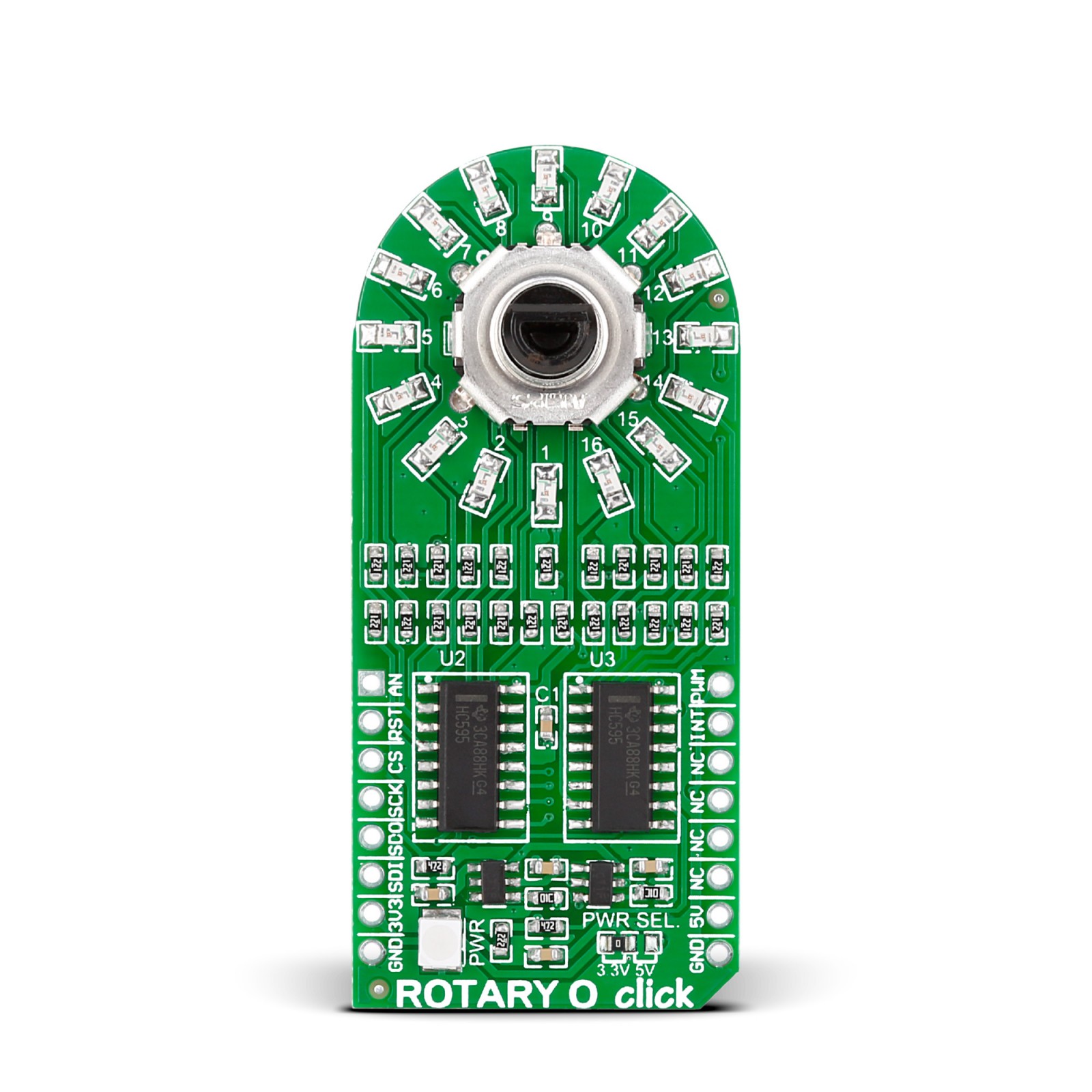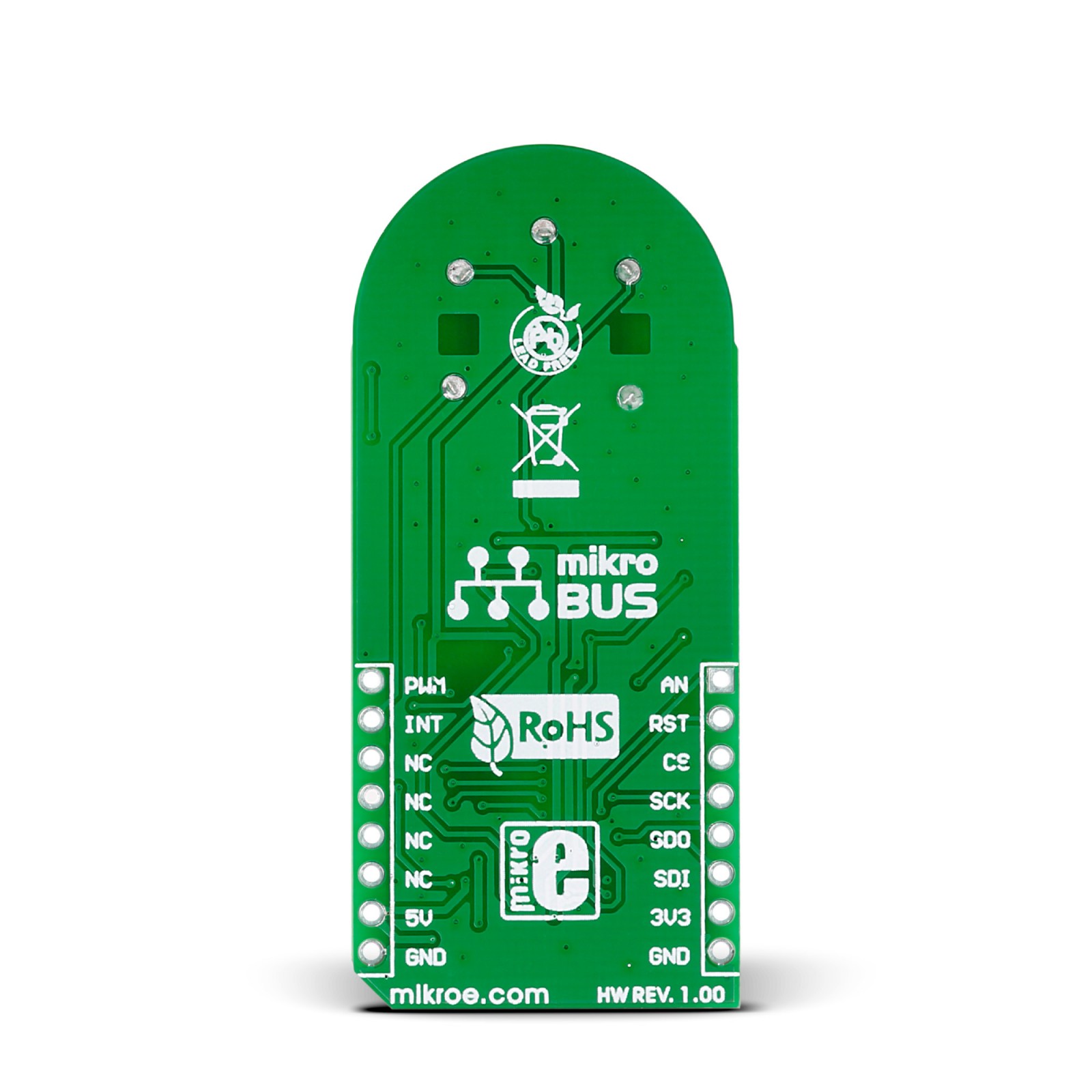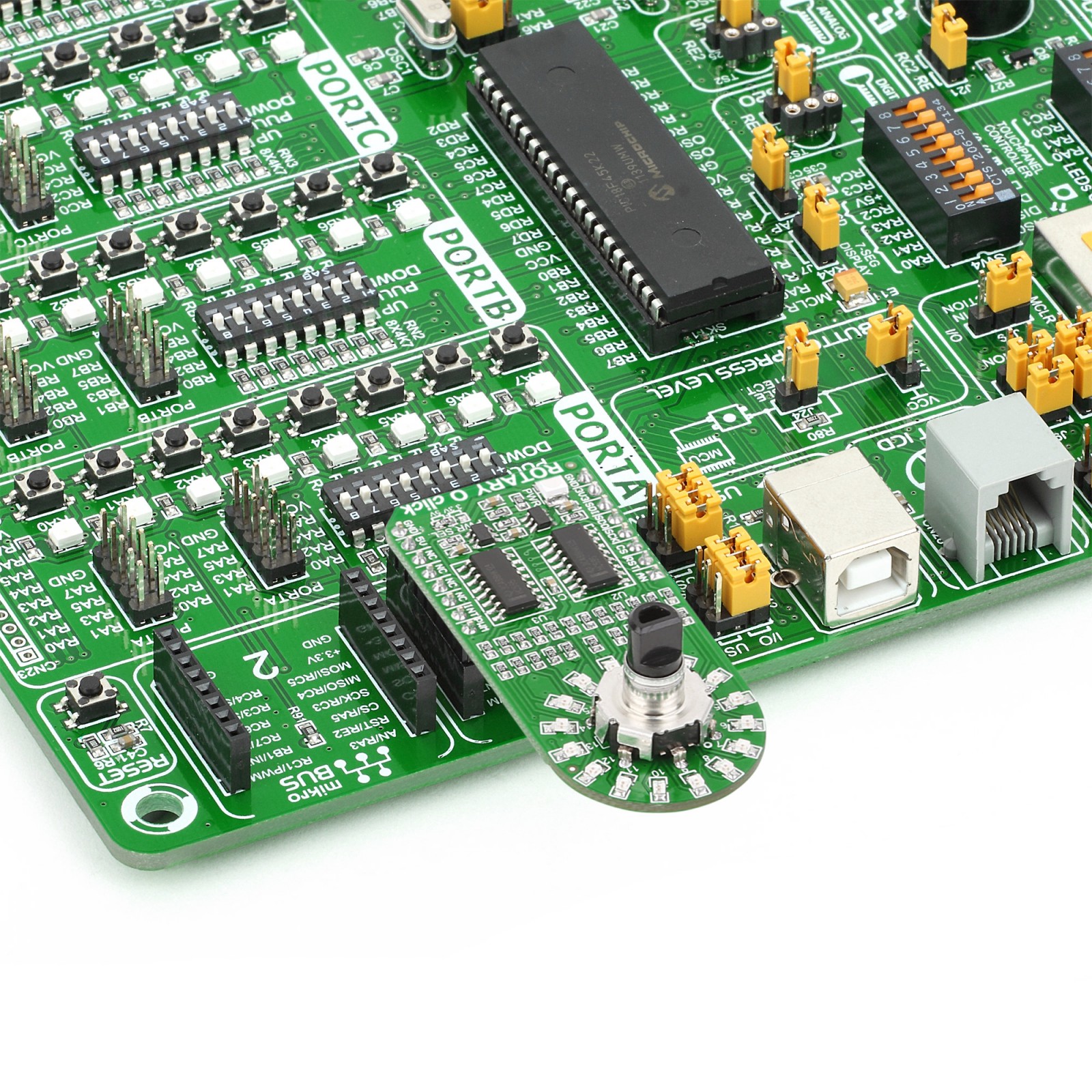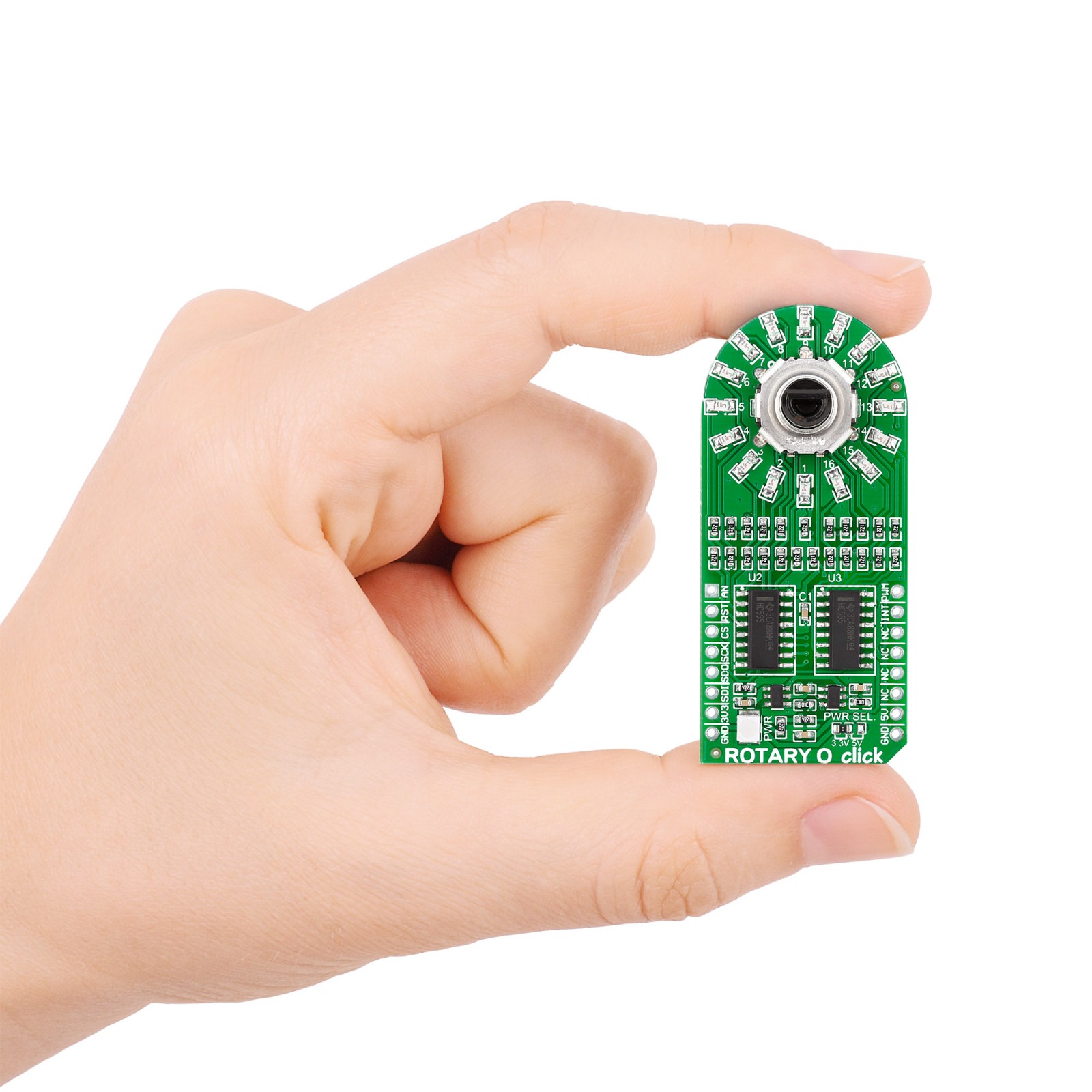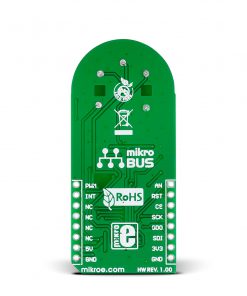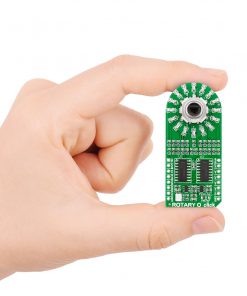ROTARY O Click
R255.00 ex. VAT
Rotary O Click is a compact add-on board that allows you to add a precision input knob to your design. This board features a combination of a high-quality rotary encoder, the EC12D1564402, and a LED ring composed of 16 individual orange LEDs. The 16-segment LED ring is driven by two 74HC595 SPI-configurable 8-bit shift registers from Texas Instruments, which can control each LED individually, allowing various lighting effects to be programmed. The encoder outputs A and B signals (out of phase to each other) on the two mikroBUS™ lines, alongside the knob push-button feature, which outputs through the interrupt line. This Click board™ can be used for various interesting visual effects to any application, such as flexible position, value indicator, or many others.
Rotary O Click is supported by a mikroSDK compliant library, which includes functions that simplify software development. This Click board™ comes as a fully tested product, ready to be used on a system equipped with the mikroBUS™ socket.
Stock: Lead-time applicable.
| 5+ | R242.25 |
| 10+ | R229.50 |
| 15+ | R216.75 |
| 20+ | R208.59 |

